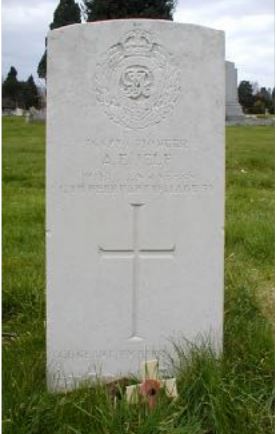494th Field Company, Royal Engineers

Albert Ernest Jelf was born at Gloucester 1881, one of two children born to Henry (Harry) Theodore Jelf and his wife Julia (née Dearn). Albert had a sister, Florence May, born in 1886. Henry Jelf was a boatman, on a steam boat probably located in Gloucester Docks.
Albert also worked in the docks but mainly as a storeman or timber labourer. On 8 February 1908 he married Ellen Louisa James at Gloucester and the couple had four children: Ernest Henry (born 23 February 1909); Wilfred G (1 June 1912); Leslie W (17 February 1914) and Stanley Albert (18 January 1918). The 1911 Census shows the family living at Percy Street, Tredworth, Gloucester.
He attested for military service on 30 August 1916 at the age of 35 years and one month and did not indicate any previous military service. He was not mobilised until 2 June 1917, when he joined the Royal Army Ordnance Corps at Woolwich and was given the number 031821. He does not appear to have been the fittest of men, as at a medical examination of 24 July 1917 he was classified as ‘B2’, which meant he was suitable for service in communication lines at home or abroad. He was further downgraded to ‘C2’ and therefore not suitable for service abroad on 6 September 1917.
On 10 April 1918 he was ‘upgraded’ back to ‘B2’ and for reasons which are unclear in what has survived in his service record, was posted to the Royal Engineers (494th Field Company) on 13 May 1918 and was given the number 365770. He appears to have spent the period 23 to 31 August 1918 in hospital with a strained back.
He was discharged from the Army on 16 April 1919, still with a ‘B2’ fitness classification, possibly during a further time spent in hospital at Southmead, Bristol, which terminated on 25 April 1919. He received a pension award from 30 October 1919 but no details have survived.
Nothing is known about his time from leaving the Army until his death at 35 Clegran Road, Gloucester, on 12 February 1921, aged 39. The cause of death was almost certainly pulmonary tuberculosis. His Pension Record Card (released via the Ancestry website in late 2018) notes that his illness was attributable to military service and that from 27 July he had been in receipt of an 80% disability pension of 32 shillings (£1.60) per week, which had been increased to 100% disability, with a 40 shillings (£2.00) per week pension. His wife also received 35 shillings and sixpence per week (£1.78) from 9 March 1921, this to cover herself and their children.
The Gloucester Citizen of 14 February 1921 carried a short Death Notice stating ‘his end was peace’. He was buried in Gloucester Old Cemetery, where a standard CWGC headstone now marks his grave.
Researched by Graham Adams 15 January 2019 (revised)
